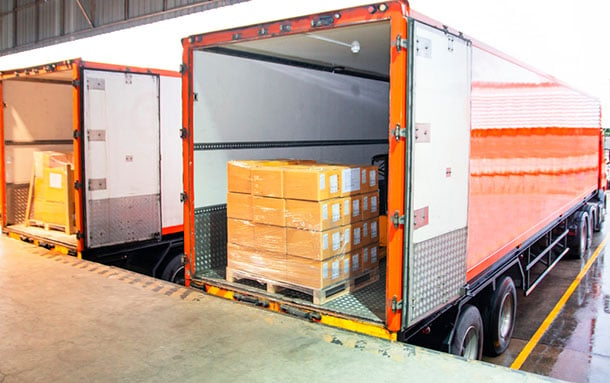The globalized nature of trade has made cargo transportation a critical component of economic growth and development. However, as the volume of goods in transit increases, so does the risk of theft, tampering, and loss. Enhancing cargo security is essential for businesses to protect their assets, ensure compliance with regulations, and maintain customer trust. This article explores best practices for safeguarding goods in transit, providing actionable insights for companies looking to improve their cargo security measures.
Understanding the Risks
Before implementing effective cargo security measures, it’s important to understand the various risks associated with transporting goods. These risks can range from theft and pilferage to damage caused by environmental factors or mishandling. The increase in global supply chains has also introduced vulnerabilities such as cyber threats and fraudulent activities. Companies must conduct a thorough risk assessment to identify potential threats specific to their operations. Understanding these risks will enable businesses to tailor their security protocols effectively.
Developing a Comprehensive Cargo Security Plan
A robust cargo security plan is the foundation of safeguarding goods in transit. This plan should outline security procedures, protocols, and responsibilities for all stakeholders involved in the transportation process. It should include details about:
1. Risk Assessment: Regularly evaluate potential threats and vulnerabilities to assess risk levels accurately.
2. Access Control: Define who has access to cargo during transit and at various checkpoints, including warehouses and distribution centers. Implement background checks for personnel involved in handling cargo.
3. Training and Awareness: Conduct regular training sessions for employees and contractors on cargo security best practices, including recognizing suspicious behavior and reporting incidents.
4. Security Technology: Invest in technology solutions such as GPS tracking, RFID tags, and surveillance cameras to monitor goods throughout the supply chain.
Implementing Physical Security Measures
Physical security measures are vital for protecting cargo during transit. These measures should be comprehensive and include:
1. Secure Packaging: Use tamper-evident packaging and high-quality materials to protect goods from damage and unauthorized access. Consider using seals and locks that can be easily monitored.
2. Secure Transport Vehicles: Ensure that transport vehicles are equipped with security features such as alarms, GPS tracking systems, and secure locking mechanisms. Regular maintenance checks can help detect vulnerabilities.
3. Route Planning: Develop strategic transport routes that avoid high-risk areas. Use real-time data to adjust routes as necessary based on emerging threats or incidents.
4. Cargo Inspection: Conduct routine inspections of cargo at various stages of transit. This includes pre-transport checks, in-transit monitoring, and post-delivery evaluations to ensure the integrity of the goods.
Leveraging Technology for Enhanced Security
Technology plays a crucial role in enhancing cargo security. By leveraging advanced technologies, businesses can improve their ability to monitor and respond to threats in real-time. Some effective technologies include:
1. GPS Tracking: Implement GPS tracking systems to monitor the location of cargo in transit. This provides visibility and enables quick response in case of theft or diversion.
2. RFID and Barcode Scanning: Use RFID tags and barcode scanning to track inventory throughout the supply chain. These technologies enhance accuracy and help prevent discrepancies or loss.
3. Surveillance Systems: Install CCTV cameras in warehouses and loading docks to deter theft and provide evidence in case of incidents. Remote monitoring capabilities can enhance responsiveness.
4. Cybersecurity Measures: As the supply chain becomes increasingly digital, protecting data and systems from cyber threats is critical. Implement strong cybersecurity protocols, including encrypted communications and secure access controls, to safeguard sensitive information.
Collaborating with Stakeholders
Successful cargo security requires collaboration among all stakeholders in the supply chain, including suppliers, transporters, and customers. This collaboration can be achieved through:
1. Regular Communication: Establish open lines of communication with all parties involved in the transportation process. Share information about risks, incidents, and best practices to foster a culture of security.
2. Standardized Protocols: Develop standardized cargo security protocols that all stakeholders can follow. This consistency ensures that everyone is on the same page regarding security measures.
3. Incident Reporting: Create a clear incident reporting system that allows stakeholders to report security breaches or suspicious activities promptly. Quick reporting can help mitigate risks and prevent further issues.
4. Partnerships with Law Enforcement: Develop relationships with local law enforcement agencies to enhance security measures. Collaborating with authorities can provide valuable insights and resources for combating theft and fraud.
Continuously Reviewing and Improving Security Measures
Cargo security is not a one-time effort; it requires ongoing evaluation and improvement. Companies should regularly review their security measures, assess their effectiveness, and make necessary adjustments. This can involve:
1. Conducting Audits: Regularly audit cargo security protocols to identify weaknesses and areas for improvement. Utilize third-party assessments for an unbiased perspective.
2. Staying Informed: Keep abreast of industry trends, emerging threats, and technological advancements that could impact cargo security. Participating in industry forums and training can provide valuable insights.
3. Learning from Incidents: Analyze past incidents to understand what went wrong and how similar situations can be prevented in the future. Implement lessons learned into updated security protocols.
4. Engaging Employees: Encourage employees to contribute ideas and feedback on improving cargo security. Their on-the-ground experience can provide valuable insights into potential vulnerabilities.
By adopting these best practices, businesses can significantly enhance their cargo security and protect their goods in transit. A proactive approach to security not only safeguards assets but also strengthens trust among customers and partners, contributing to long-term success in an increasingly competitive marketplace.

